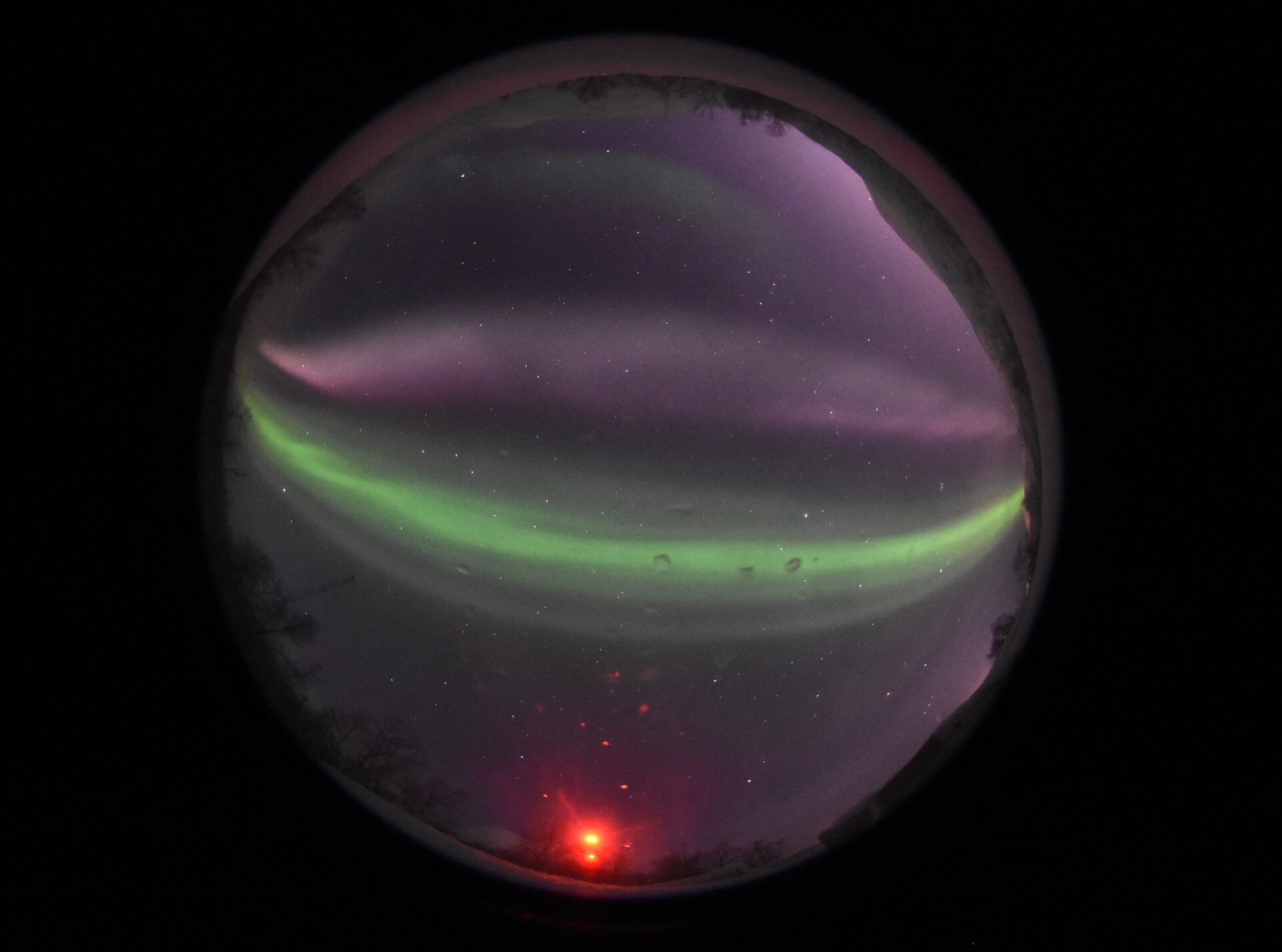|
|
|||||||||||||||||||||||||||||||||||||||
  |
|||||||||||||||||||||||||||||||||||||||
|
Paper Published: 2024/11/8 Identifying STEVE's TwinSota Nanjo (Swedish Insititute of Space Physics)
Post-midnight purple arc and patches appeared on the high latitude part of the auroral oval: Dawnside counterpart of STEVE? The main finding of this study is that the aurora-like purple glow, known as STEVE (Strong Thermal Emission Velocity Enhancement) and occasionally observed in the subauroral region on the duskside, may also appear in the auroral latitude on the dawnside. The newly discovered phenomenon appears, as shown in Figure 1, north (poleward) of the green aurora. Following the European Space Agency's (ESA) press release, which referred to this phenomenon as "STEVE's twin," this article will also use the term "twin" to describe it. The subauroral region where STEVE appears on the duskside is well known for its frequent westward fast ion flows. Observations and models have indicated that an eastward ion flow may occur in the area where the twin was observed, suggesting that fast ion flows play an important role in the mechanism generating both STEVE and its twin. One noteworthy aspect of this twin's discovery is the essential role played by a commercial digital camera. We captured this purple glow using a digital camera installed in Tromsø, Norway. Unlike scientific cameras, which often capture monochromatic images, digital cameras use three RGB channels to record color, making it easy to distinguish between the green aurora and this purple glow. Furthermore, images taken with commercial cameras are familiar not only to scientists but also to the general public, making them valuable datasets for the field of "citizen science." In fact, this phenomenon was discovered by Gabriel A. Hofstra, a photographer in Tromsø, Norway, who is the second author of this study.  STEVE's twin. The green glow seen at the lower part of the image is a normal aurora. The camera is located at the Ramfjordmoen Research Station near Tromsø, Norway. The image is oriented with north at the top and east to the left. In addition to digital camera observations, the magnetometer and particle data derived by ESA's Swarm satellites and the visible light image from the NOAA-20 satellite of the U.S. National Oceanic and Atmospheric Administration (NOAA) showed that the twin has a longitudinal structure spanning thousands of kilometers. This region also exhibited a sharply increasing eastward ion flow, revealing twin's morphological and electromagnetic similarities to STEVE. This fast ion flow, known as the "Dawnside Auroral Polarization Stream (DAPS)", can be considered the dawnside counterpart to the westward fast ion flow involved in STEVE's formation. Thus, the observed twin is also likely triggered by fast ion flows, indicating potential commonalities in the emission mechanisms behind STEVE and its twin. This research provides new insights into the diverse generation mechanisms of atmospheric luminous phenomena and supports the importance of digital camera observations. By repeating such observations, we may be able to clarify precisely how the purple glow forms and how fast ion flows contribute to its emission. To achieve this, continued collaboration between scientists and citizen scientists in observing STEVE and its twin is essential. This study suggests that the twin could be a key in unraveling the mysteries of aurora-like luminous phenomena. |
|||||||||||||||||||||||||||||||||||||||
|
